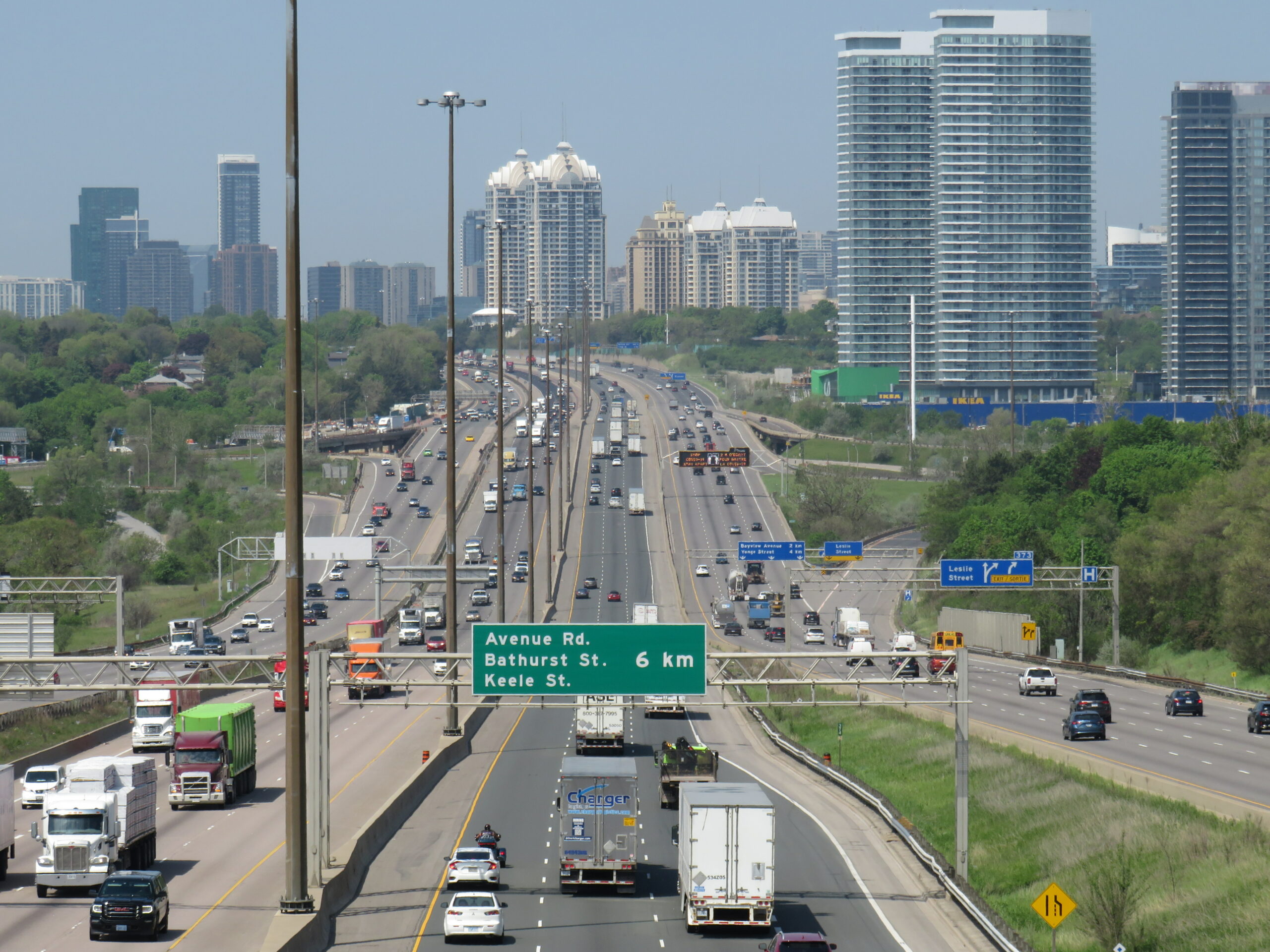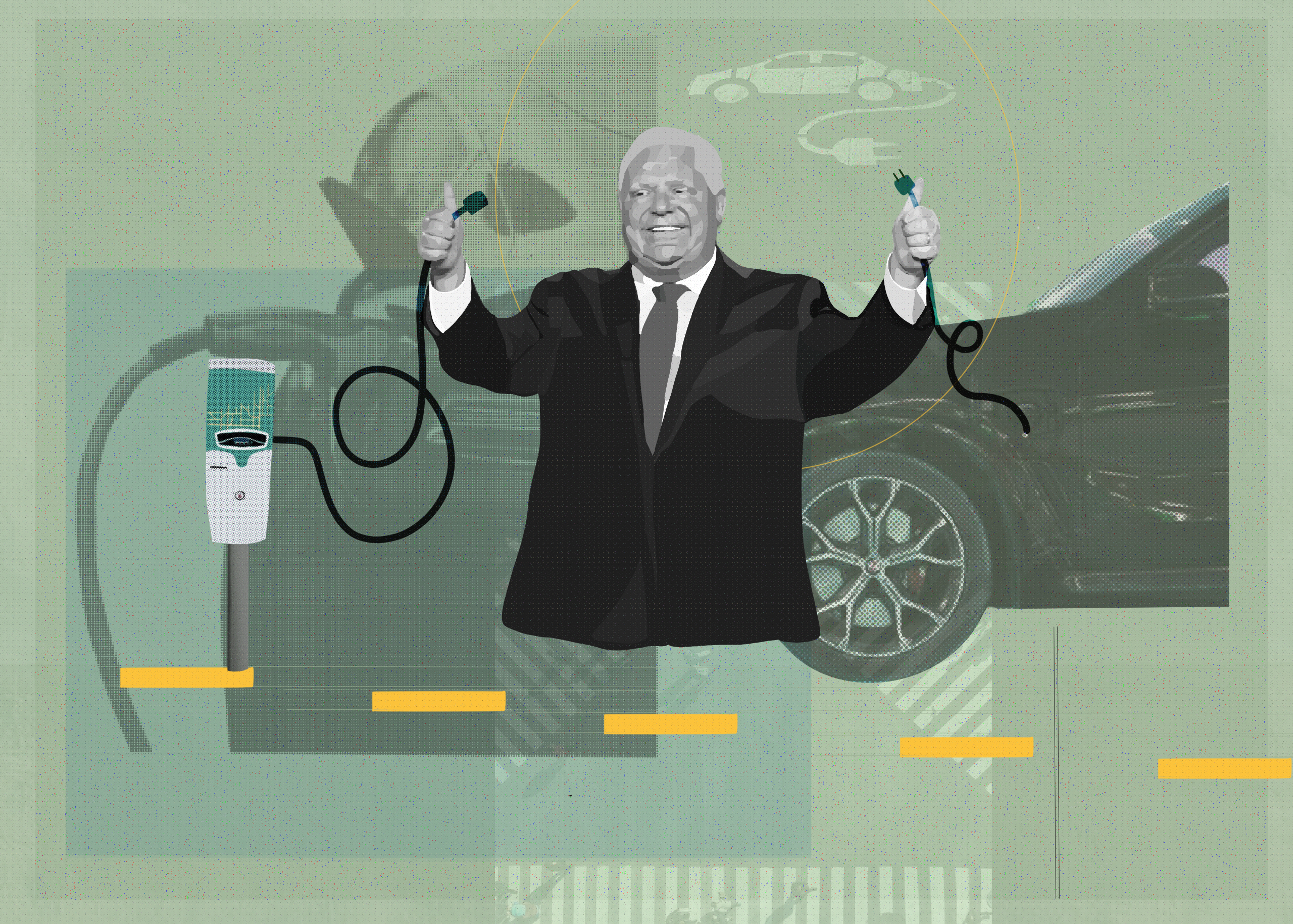
Bill 15: this ‘blank cheque’ legislation could dramatically change how B.C. approves major projects
Premier David Eby says new legislation won’t degrade environmental protections or Indigenous Rights. Critics warn...
A proposed new provincial park with no location.
An increase in highway spending.
A rosy outlook on mining in the Ring of Fire in Ontario’s Far North.
The Progressive Conservative’s 2022 budget — and de facto campaign platform, since the government is expected to call a provincial election next week — lays out Premier Doug Ford’s vision for what his government wants to do if re-elected. It includes no new information or policies about efforts to address emissions reductions and the broader climate crisis.
The word “climate” appears just five times in the 241-page document. None are references to cutting greenhouse gas emissions. (The single emissions reference is an endorsement of the budget’s electric vehicle commitments from the CEO of Honda.)
The Progressive Conservative government’s past three budgets included small dedicated chapters for environment initiatives. There is no dedicated environment chapter this time around.
Instead, the government repeats previously announced policies and funding, including for electric vehicles, highways and kickstarting mining in the Ring of Fire region. Few of these policies come with a calculated price tag for Ontario taxpayers.
And four years on, the government remains proud of its approach on climate, even as critics have called its policies a step backwards for the province and denounced its latest emissions-reduction plan as lacklustre. In one section about cost-savings and support for business, the government lists “cancelling the cap-and-trade tax” as one of 13 policy decisions that have helped Ontario businesses. (The cancellation of the $3 billion cap-and-trade program cost businesses and taxpayers millions of dollars.)
“By ramping up our production of clean steel, hybrids and electrical vehicles, we are showing that Ontario can hit our climate targets without imposing a carbon tax,” Ontario Finance Minister Peter Bethlenfalvy told the legislature on Thursday.
At a press conference the same day, The Narwhal questioned Bethlenfalvy about the lack of emissions-reduction items. He said the government is “building good green jobs.”
“That’s our vision,” he added. “That will help with emissions.”
The opposition parties swiftly condemned the budget’s scant mention of environmental issues. Ontario Liberal leader Steven Del Duca said Ford “deliberately and consistently makes the wrong choices” on climate. Ontario NDP leader Andrea Horwath pointed to the highway on the document’s cover, saying: “This says everything about Doug Ford’s privatization of the environment … we’ll get more pollution, more smog, more precarity.”
Ontario Green Party leader Mike Schreiner said the Ford government has “no interest” in addressing the climate crisis. “The fact there’s no environment chapter in this budget shows us that Ford’s primary issue around the environment is paving it over,” Schreiner said.
Here’s a breakdown of the major environmental takeaways from the budget.
Highways are a huge theme in the 2022 Ontario budget — so major, in fact, that a photo of one is emblazoned across the document’s cover. The Ford government is pursuing plans to build two flagship road projects, the Bradford Bypass and Highway 413, both of which would cut through Ontario’s Greenbelt to connect Toronto’s outer suburbs. The Progressive Conservatives argue the roads would reduce congestion and cut commuting times, which the government says cost the province $11 billion per year in lost productivity. It’s an argument aimed at suburban commuters living in voter-rich ridings around Toronto, a key battleground in pretty much every Ontario election.
However, decades of research show that in the long-term, new highways attract more traffic instead of relieving it. And both Highway 413 and the Bradford Bypass have been criticized by environmentalists and opposition parties for their impact on waterways and prime farmland, along with an expected increase in greenhouse gas emissions from additional cars on the road.
Since last year, the Progressive Conservatives have signalled an intention to double down on the projects despite criticism, even bumping up the government’s funding commitment for highways in November. The 2022 budget includes another boost in highway spending: the Ford government is now committing just over $25 billion, about $2 billion more than what it had on the books before.
That number includes a whole bunch of other highway-related projects, like a plan to widen Highway 401 east of Toronto. In a briefing with reporters, Ministry of Finance staff said the bump isn’t due to any additional costs from Highway 413 and the Bradford Bypass — instead, it’s because the government added even more highway projects to its to-do list.
Even though the Progressive Conservatives have set aside this huge chunk of change for highways, the government is staying mum about how much its two flagship projects will cost. Older estimates for Highway 413 range from $6 billion to $10 billion. The government has said the Bradford Bypass would cost $800 million to build, while the Toronto Region Board of Trade has estimated it would be roughly $1.5 billion.

The Ford government’s bid to open up the Ring of Fire region in the James Bay Lowlands of Ontario’s Far North for mining has been centre stage since 2018, when Ford promised to “hop on a bulldozer” himself to build a road there if necessary. And although the government isn’t committing any new funding to the area, the Ring of Fire is a major component of the 2022 budget.
“The next chapter in the story of Ontario’s prosperity begins in the North,” the budget reads.
The government has said it believes certain “critical minerals” there — like nickel, a key component of electric vehicle batteries — could put Ontario in a strong position economically as the global economy shifts toward cleaner technologies. As previously announced, the province is pouring $12 million into extending the length of a program to help junior mining companies with the costs of mineral exploration.
But the Ring of Fire is difficult to access. There are no permanent roads to the area, which also lacks a lot of basic infrastructure, and the boggy peatlands in the region make it difficult to build on. First Nations there also don’t agree on the best path forward for the land, and not all have given their consent for development.
The budget paints a bright picture of the government’s progress on the Ring of Fire. It has upheld the former Liberal government’s commitment of $1 billion to building permanent roads to the region. It has also pushed forward work on environmental assessments for two road projects led by Marten Falls First Nation and Webequie First Nation.
But after four years, the government is no closer to securing the federal funding it needs to fully pay for roads that would enable mining companies to really get going. “Ontario will continue to call on the Government of Canada to step up and match Ontario’s funding commitments to getting the road to the Ring of Fire built,” the budget says.
Tucked at the end of a budget chapter focused on highways, transit and mining, the government included one paragraph promising a new provincial park.There are no details about where it would be, how much it would cost or when it might become a reality.
Despite the fact that the idea of a new provincial park was first mentioned in an Progressive Conservative government budget in 2020 — then, it was a proposal to “support a large near-urban provincial park at East Humber Headwaters in King Township” — Ministry of Finance officials said the project is still in the early stages of planning and details aren’t available. They told The Narwhal that the East Humber Headwaters plan is separate. Locations for this park are still being considered, but the ministry said it would be located in “Central Ontario” and would have 250 car and backcountry campsites, roofed accommodations and daytime activities like swimming, hiking and cross-country skiing.
Other parties are also jostling to get in on the provincial park action. The Ontario Liberals announced earlier this month that if elected, they would create five new provincial parks, a pledge that also doesn’t come with specific locations attached.
One key foundation of the Progressive Conservative vision for economic growth is a strong electric vehicle industry. After removing electric-vehicle infrastructure in their first year in office, the Tories’ 2022 budget spends substantial pages detailing the billions of “game-changing” dollars the government has invested in this sector (none of the billions are new to this budget).
This includes the government’s strategy to pursue critical minerals to create a battery manufacturing industry, and corporate credits to incentivize major automakers to set up operations here.

The only budget policy related to emissions reductions in Ontario concerns hydrogen production. This, too, is not new: on April 7, the Ford government published its first Low-Carbon Hydrogen Strategy, calling hydrogen a form of clean energy that will “create jobs, attract investment and reduce greenhouse gas emissions.”
The government is supporting Atura Power, a subsidiary of Ontario Power Generation, in building the province’s largest low-carbon hydrogen production facility in Niagara Falls. The hydrogen produced from this plant would be used to power heavy-duty trucking and heavy industrial polluters.
The government, which cancelled the cap-and-trade system as its first move in office in 2018, also reiterated its plans to build a voluntary clean energy credit registry. This will essentially create a carbon market that allows corporations to buy clean energy credits to offset their fossil-fuel usage and meet emissions reduction requirement.
The 2022 budget also briefly mentions efforts to expand transmission lines, natural gas and nuclear energy across the province.
There is a slight but new emphasis on strengthening water infrastructure in this budget. A small section titled “protecting Ontario’s water” outlines a $24 million investment in the Holland Marsh Phosphorus Recycling Facility in York Region to tackle issues of phosphorus runoff into Lake Simcoe from wastewater treatment plants. As communities across Ontario project booming population growth, the issue of sewage management is of increasing concern — one the government identifies for its first time in the budget this year.
“Looking ahead, the government is building Ontario through strategic investments in stormwater and wastewater management, while leveraging digital technology and innovation to plan for sustainable growth for years to come,” the budget reads.
The central policy to the Ford government’s 2018 Made-in-Ontario environment plan was the creation of the Ontario Carbon Trust, a $400 million fund to encourage private investment in clean technologies. The trust has never been mentioned in any successive budget. Ministry officials did not respond to inquiries by The Narwhal about its status by publication time.
Get the inside scoop on The Narwhal’s environment and climate reporting by signing up for our free newsletter. On a warm September evening nearly 15...
Continue reading
Premier David Eby says new legislation won’t degrade environmental protections or Indigenous Rights. Critics warn...

Between a fresh take on engagement and our new life on video, our team is...

The public has a few days left to comment on Doug Ford’s omnibus development bill....
